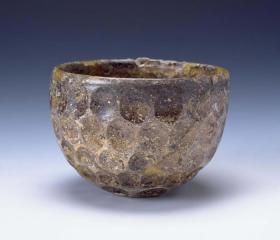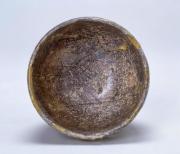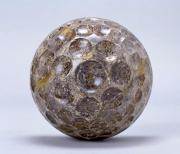収蔵資料からHighlights
Cut-Glass Bowl
ガラス Glass イラン Iran ササン朝 6~7世紀 Sassanid period, 6th-7th century CE 高 8.0 cm, 径 11.6 cm H. 8.0 cm, D. 11.6 cm ササン朝ペルシア(226-651)で作られたカットガラス碗。交易の品として各地に輸出され、シルクロードを通って中国、さらに日本にも伝わりました。類品が正倉院や東京国立博物館にも所蔵されています。 Sasanian(226-651 CE) glass bowls with prismatic surface designs produced by faceting became extremely popular and many were widely exported, reaching China and Japan. Similar examples have been kept in the Japanese imperial collection. |



